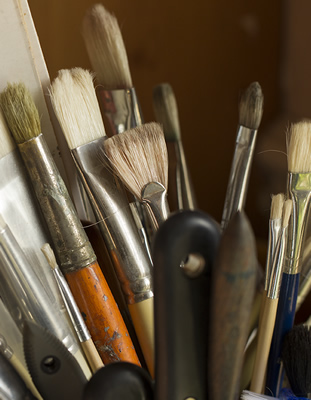

ABOUT US
A number of names were involved in the early days but it was truly the concept of Tom Howard and John Marshall who approached the Lady Lever’s curator Sidney Davison. Davison in turn spoke to Will C Penn, Vice Principal of Liverpool School of Art, and he embraced it with enthusiasm.
PENN'S LETTER
Penn published a letter in the Birkenhead News inviting all with some art training to join and expressing the society’s intentions:
It is hoped that the lectures and discussions may cover a wide range of aspects of the application of art to life and make us all more conscious of the usual aspect of our environment and stimulate efforts to beautify our surroundings...
It is hoped that the Society may consider not only historically but that they explore its function and scope in relation to our own life and times.
The Society hopes to become strong enough to hold public exhibitions fromtime to time.
(11th September 1948)
FIRST EXHIBITION IN 1949
The Lady Lever was the home of the Society for its first exhibition in 1949 but they were unable to offer space in 1950 so the exhibition shifted to the Williamson Art Gallery and that relationship began. The WSA did, however, retain its studio in the Lady Lever basement until 1966, used for weekly meetings, socials and small displays.
The Williamson has never been able to dedicate a space to the Society’s exclusive use though meetings, life drawing and other sessions were moved over. Monthly lecture meetings continued into the 1980s but they foundered at a time when membership numbers were lower than before and many amateur artists had felt pushed out; artists with a more professional attitude are often not interested in work dissimilar to their own and would not come to demonstrations. Evening life drawing sessions continued with the support of the gallery until very recently.
1950 - 1990
From 1950 into the 1990s annual exhibitions were held at the Williamson. By that time, with the development of the Wirral Spring Exhibition, it was felt that the gallery programme needed freeing up a little so the members’ exhibition was changed to every 2 years and an alternative venue sought for the other year: Birkenhead Town Hall and the short-lived Blackthorn Gallery in Birkenhead (housed in the former Della Robbia Pottery building in Price Street) were used but it was never considered satisfactory solution.
Instead the innovation of the an open exhibition, inviting other artists from outside the membership to show alongside the WSA members, has led to several exhibitions of great quality and has revealed a number of artists who have subsequently become members, though these are often not local residents.

